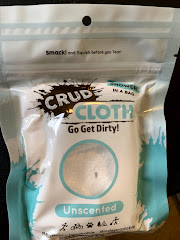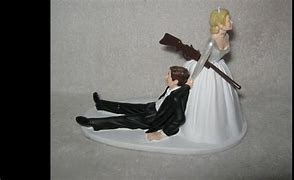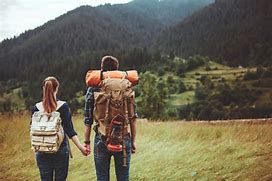There are many TEOTWAWKI (The End Of The World As We Know It for those not quite as versed) scenarios each with varying degrees of survivability. As someone interested in writing an apocalyptic story someday, I've often pondered what the 'event' or 'events' I would utilize as the background for my own apocalyptic adventure series would entail. Some scenarios are horrifically dire and offer the barest chance (if any) of survivability - think The Road. Others are a little more survivable, but come with their own lasting effects or impressions that survivors have to deal with from there. Still, other scenarios would stage human survivors with a near-utopian environment within which to grow and evolve.
Below I explore the polar-opposite sides of the spectrum for TEOTWAWKI events along with the differences in outcome. Of course the outcome of TEOTWAWKI events is an analog scale with everything in between and, for the course of this mental exercise, I'm assuming these events are End of the World As We Know It, not the actual end of the physical world.
Common Threads
Apocalyptic events have standard, general threads or parameters we can start with when discussing the survivability and lasting effects of such scenarios; environmental impact, human impact, time of event, and lasting effects. The ratio to these parameters in relation to one another will make or break the survivors and set the stage for the chances of recovery of humanity. Let's take the two extremes of these variables as outlined below....a total hell of an apocalypse for the survivors and an apocalypse that's...not so much of a hell, utilizing just two of the parameters; environmental impact and initial human impact.
Major, Sudden Environmental Impact/Minor Initial Human Impact
For my money this is the worst-case scenario. Again, think The Road as an example. The actual event was quick (though never described, I believe it was an asteroid or meteor strike) that broke the planet, but killed very few people. From what we can tell in the story, the event devastated the environment at a base-line level to a degree that 10 years afterward there were no crops, no food, and no sustainability to maintain the human population on the planet. However, that population was still very large....people still in the billions immediately after the event, so you had billions of people now fighting for precious little food and few resources everywhere.
In this type of scenario the lasting effect is just that; lasting, altering the global environment permanently. With nature dying and no resources to go around, for the remaining billions of human beings left on the planet, violence and cannibalism would quickly prevail. There would be almost no chance for any type of sustainability. Preparations, for those that made them, would either be quickly exhausted or people would die trying to defend or steal them. If the event's serious enough it could very well lead to the extinction of the human species. Our only hope would be if, some how, nature could start to recover fast enough and in a way that humans could exploit without, again, consuming natural resources to nothingness.
Minor to Non-Existent Environmental Impact/ Major Human Impact
This is the flip side of the apocalypse above, where many humans are killed or die off quickly while leaving the environment relatively untouched and stable. This, in my opinion, is the best-case scenario as it would leave plenty of resources for a long time, with very little human competition. I've often referred this to a utopian dystopia...all the vision of the end of the world as we know it, but if you happen to survive the event you'd have plenty of food, water, and supplies as long as you're in a safe area. Perhaps the worst, lasting effect the survivors would have to deal with would be the piles of human bodies left behind...all depending on the event, of course.
Examples of this type of event would include a global pandemic with very high virility and lethality rates or some other event which specifically targets human beings and kills quickly. Another, farther fetched example may be alien invasion similar to what was portrayed in Skyline (horrible movie, BTW), in which the aliens targeted and harvested human beings similar to the way we harvest lobsters and seafood from the oceans en-mass.
Final Musings
Of course, I'd rather survive in option 2 than option 1. The setting is rife with the survivors having options to rebuild and expand, assuming the cause of the apocalypse didn't return and/or the lasting events of the apocalypse were manageable.
Option 1 offers the greatest challenges to survivors (and authors writing about them, I think). This type of apocalypse would offer a hellish landscape and background in which to survive. To say it'd present it's own challenges is an understatement....but, then again, challenges provide opportunity in their own ways.
Sidebar..... Tribal Warfare

Even a casual look at all apocalyptic fiction reveals a common threat that courses through; man vs man or tribal warfare. Boil away the zombies, radiation, infection, raging storms, or whatever apocalyptic event that triggers the story and you have one group of survivors fighting another group (or groups) for resources. In that, the apocalypse would only serve to emphasize the age old drive our species fights on a daily basis - the urge, need, or hunger to perform violence against our fellow man. Fun fact about myself, I'd love to live in a zombie apocalypse, but the thought, even then, of taking arms against another human being twist my stomach, even knowing that doing so would be a mark of my own survivability. That's not to say I wouldn't do it, but I'd sure as hell avoid it as much as I possibly could, especially considering there may not be much of us humans left at that point. Let's just be thankful that the apocalypse remains relegated to fiction books, moves, and video games.....for now.
Peace.


















































